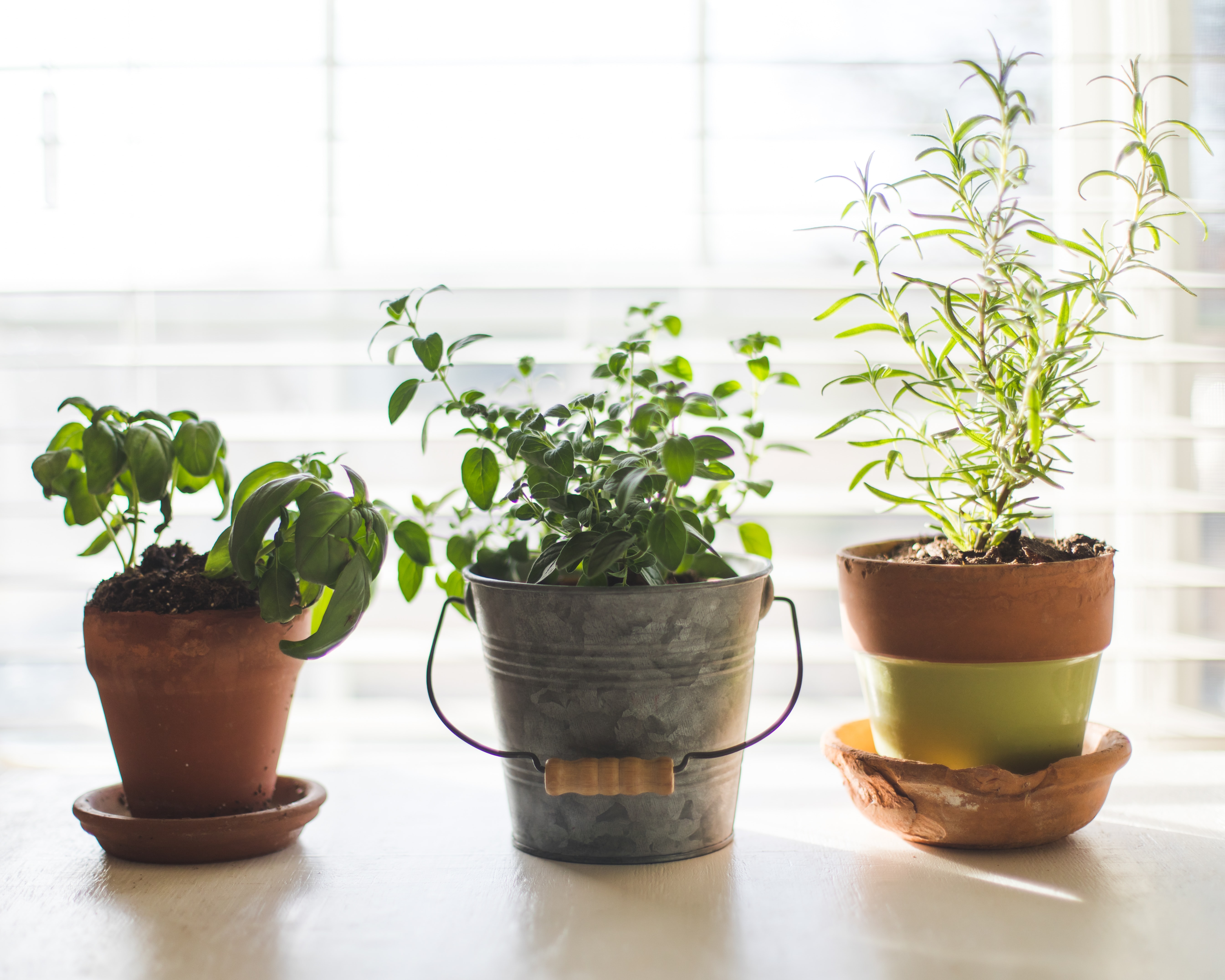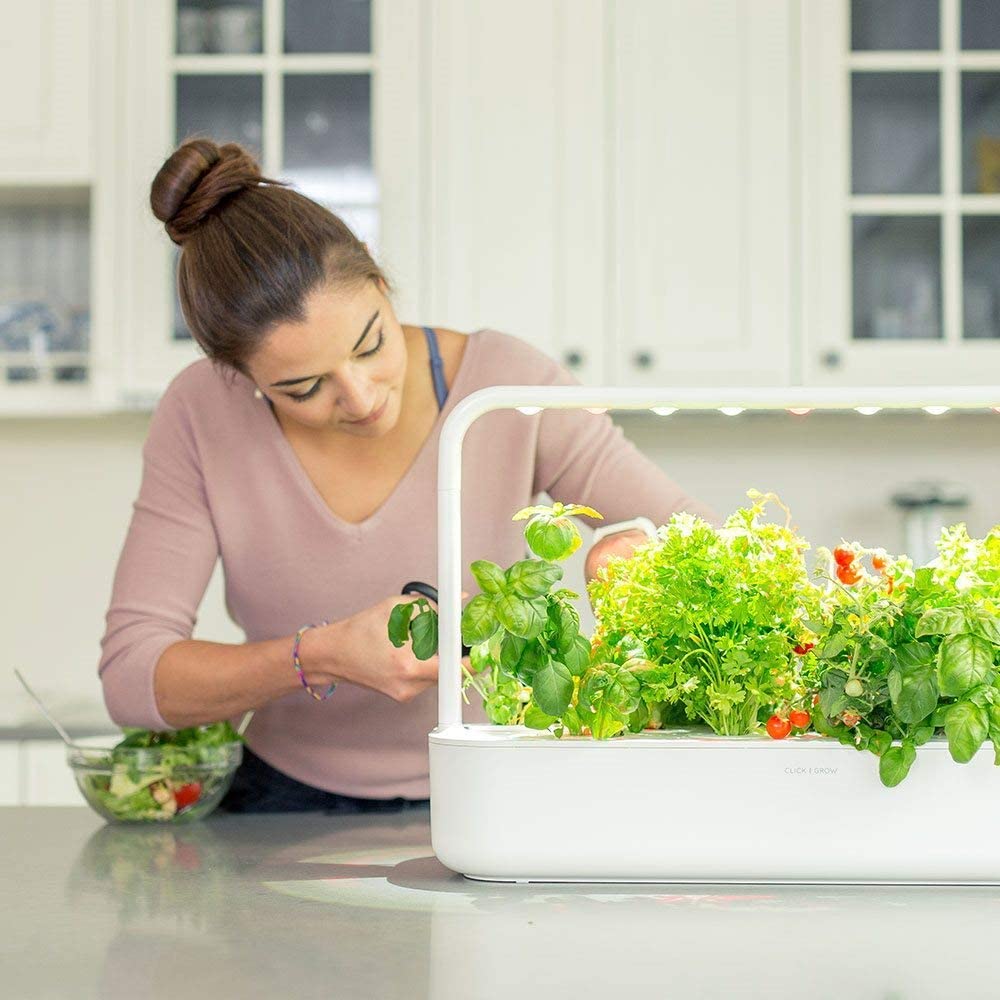How to grow an indoor herb garden for gorgeous and tasty results
Find out how to grow an indoor herb garden for fresh herbs all year round

An indoor herb garden can provide you with delicious herbs at a time when there's hardly any greenery outdoors. Growing herbs indoors is actually quite easy, so long as you create the right conditions for these sun-loving plants. There are two main routes to growing herbs indoors – traditionally in pots or hydroponically; we discuss both methods below.
Find more garden ideas at our dedicated page.
Which herbs can be grown indoors?
Pretty much all of them! Basil grows especially well indoors, and so do parsley, oregano, chives, and thyme. We've had less success with dill, which seems to just do better in an outdoor herb garden, and rosemary, which is more reliant on the seasons, but you can still try with these – just don't expect bushy, large plants.
Windowsill herb gardens: the basics
Windowsill herb gardens are as old as the hills: generations of people have successfully grown herbs on their kitchen windowsills, so it's really not that difficult. The only real potential issue with indoor gardening and growing herbs indoors is the lack of bright light, which herbs need a lot of to thrive. So, here are our basic tips:
1. Choose the brightest spot your can find. You'll have the best results with a south-facing window, because herbs need 6-9 hours of sunlight to develop properly. If there's no way you'll get that with your kitchen window aspect, get a daylight-imitating LED grow light.
2. Choose pots and soil correctly: herbs require good drainage, so you must plant them in pots with drainage holes, or they'll succumb to root rot. Good all-purpose compost should be fine, but don't pack it into the pots too densely.
3. Once you've planted your seeds, water the pots regularly, but not all the time. Herbs like to dry out between waterings, so don't worry if the top soil is a little dry. Water well and infrequently seems to work better than watering all the time.
Get small space home decor ideas, celeb inspiration, DIY tips and more, straight to your inbox!
4. Avoid young leaves touching the window, as they could get burned by bright sun through the glass.
Hydroponic herb gardens: how do they work?

Basically, growing herbs indoors hydroponically means growing them in a solution of water and nutrients rather than soil. There's less room for failure, here, and people who struggle with growing herbs indoors in soil will often find that getting a hydroponic garden kit helps. Indoor herb garden kits vary, but most will include some kind of a planter base with plugs for the plants, a container where the nutrient-rich solution goes, and an overhead LED light.
There aren't any downsides, really: hydroponic herbs grow faster, tend to taste good thanks to those well-balanced nutrients, and don't require any watering, because the hydroponic kit hardware takes care of them. But – they will cost you, from around £15 for the cheapest kits on Amazon to £170 for high-tech kits like the Aero Garden Harvest. The more expensive kits come with seeds or can even offer a plant subscription service, like Click and Grow who supply plug plants rather than seeds.
Indoor herb garden kits: are they worth it?
In theory, you should be able to grow plants indoors without the need of hydroponics. In practice, if you live in an area where winters are dark, your herbs simply won't have enough light to grow. The solution is either an LED grow light or an indoor garden kit (which will also have an LED light). Ultimately, it boils down to how much you're prepared to spend on growing herbs, but with cheaper kits now available from Ikea, Aldi, and others, they're well worth a try.
Anna is a professional writer with many years of experience. She has a passion for contemporary home decor and gardening. She covers a range of topics, from practical advice to interior and garden design.